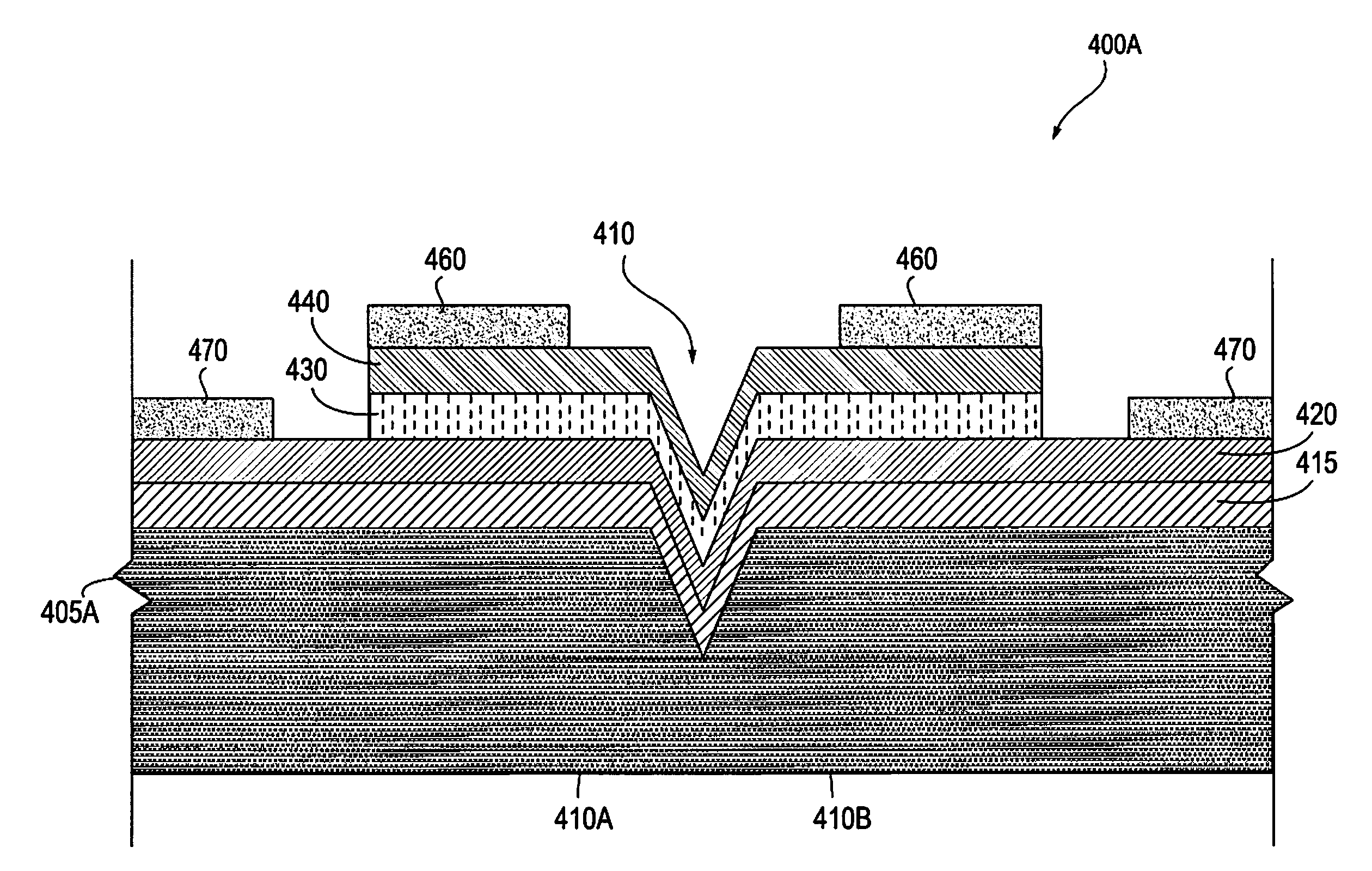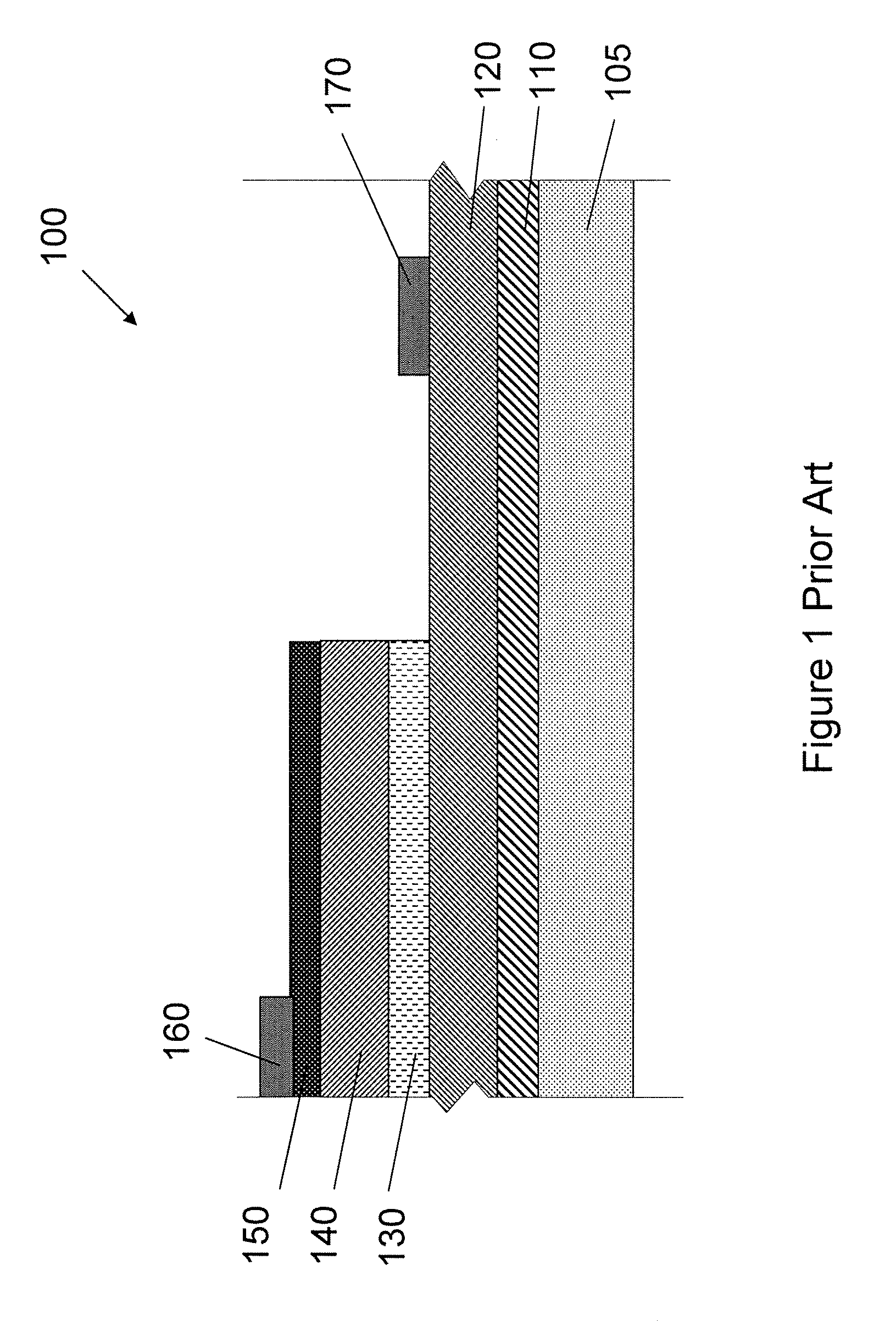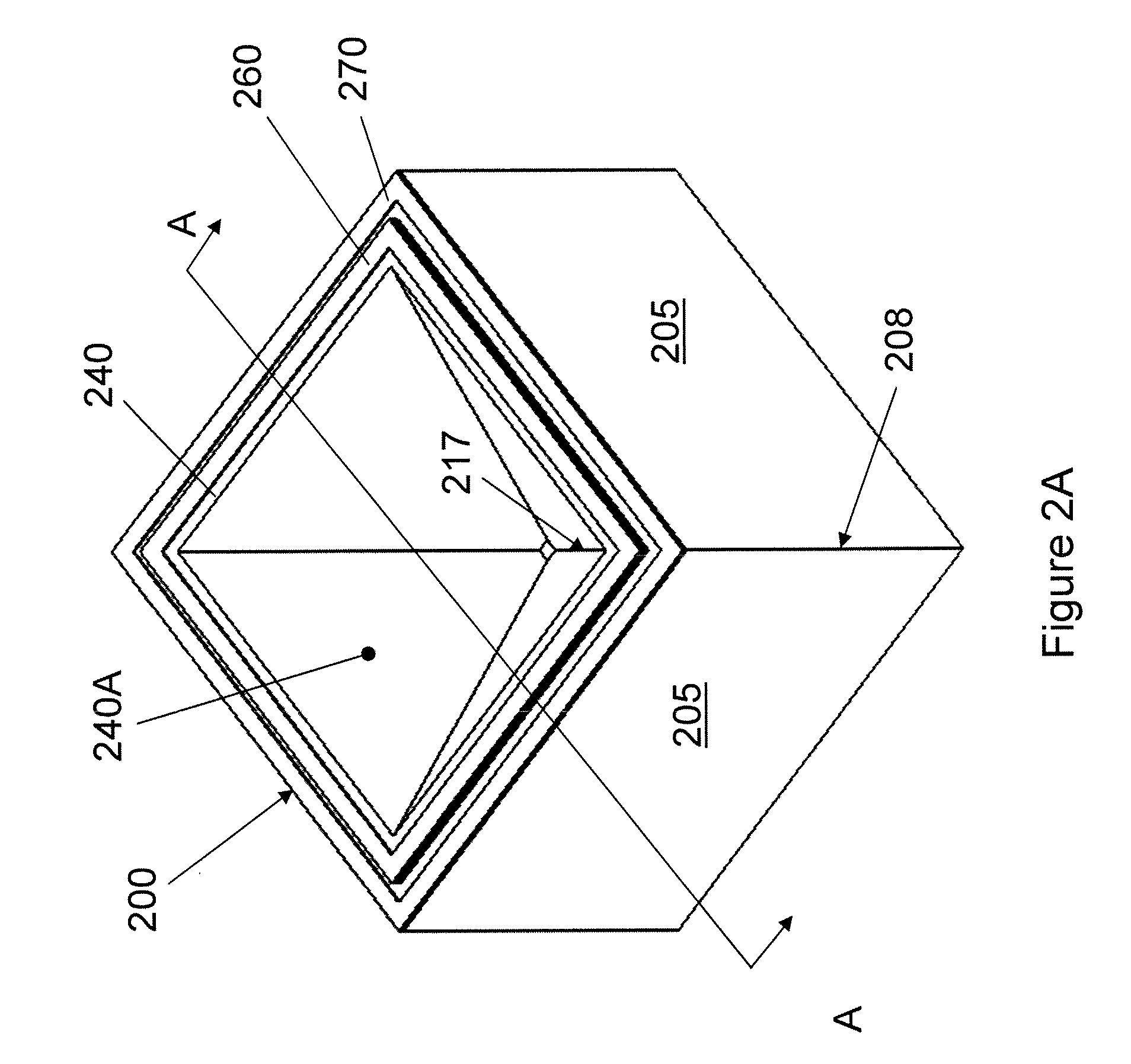Light emitting device
a technology of light emitting devices and light emitting surfaces, which is applied in the manufacture of semiconductor/solid-state devices, semiconductor structures, electrical devices, etc., can solve the problems of low manufacturing throughput low manufacturing throughput associated with small substrate dimensions, and high cost of conventional solid-state light emitting devices. , to achieve the effect of reducing absorption-related light loss, increasing light emission intensity, and increasing light emission intensity
- Summary
- Abstract
- Description
- Claims
- Application Information
AI Technical Summary
Benefits of technology
Problems solved by technology
Method used
Image
Examples
Embodiment Construction
[0049]Referring to FIGS. 2A to 3C, a light emitting device 200 is formed on a substrate 205 having an upper surface 207 (FIG. 3B). The light emitting device 200 includes a trench 210 in the substrate 205 below the upper surface 207. The trench 210 has one or more trench surfaces 213 (FIG. 3B) at a slope relative to the upper surface 207. The trench 210 can also have a bottom surface 219 that is parallel to the upper surface 207. The area of the bottom surface 219 can be kept smaller than 20% of one of the trench surfaces 213. The substrate 205 can be silicon based: the upper surface 207 can be parallel to the (100) crystalline plane. The trench surface 213 can be parallel to the (111) crystalline surface. (Alternatively, the upper surface 207 can be parallel to the (111) crystalline plane. The trench surface 213 can be parallel to the (100) crystalline surface.) The trench 210 thus can have the shape of an inverted pyramid or a truncated inverted pyramid in the substrate 205, which ...
PUM
 Login to View More
Login to View More Abstract
Description
Claims
Application Information
 Login to View More
Login to View More - R&D
- Intellectual Property
- Life Sciences
- Materials
- Tech Scout
- Unparalleled Data Quality
- Higher Quality Content
- 60% Fewer Hallucinations
Browse by: Latest US Patents, China's latest patents, Technical Efficacy Thesaurus, Application Domain, Technology Topic, Popular Technical Reports.
© 2025 PatSnap. All rights reserved.Legal|Privacy policy|Modern Slavery Act Transparency Statement|Sitemap|About US| Contact US: help@patsnap.com



